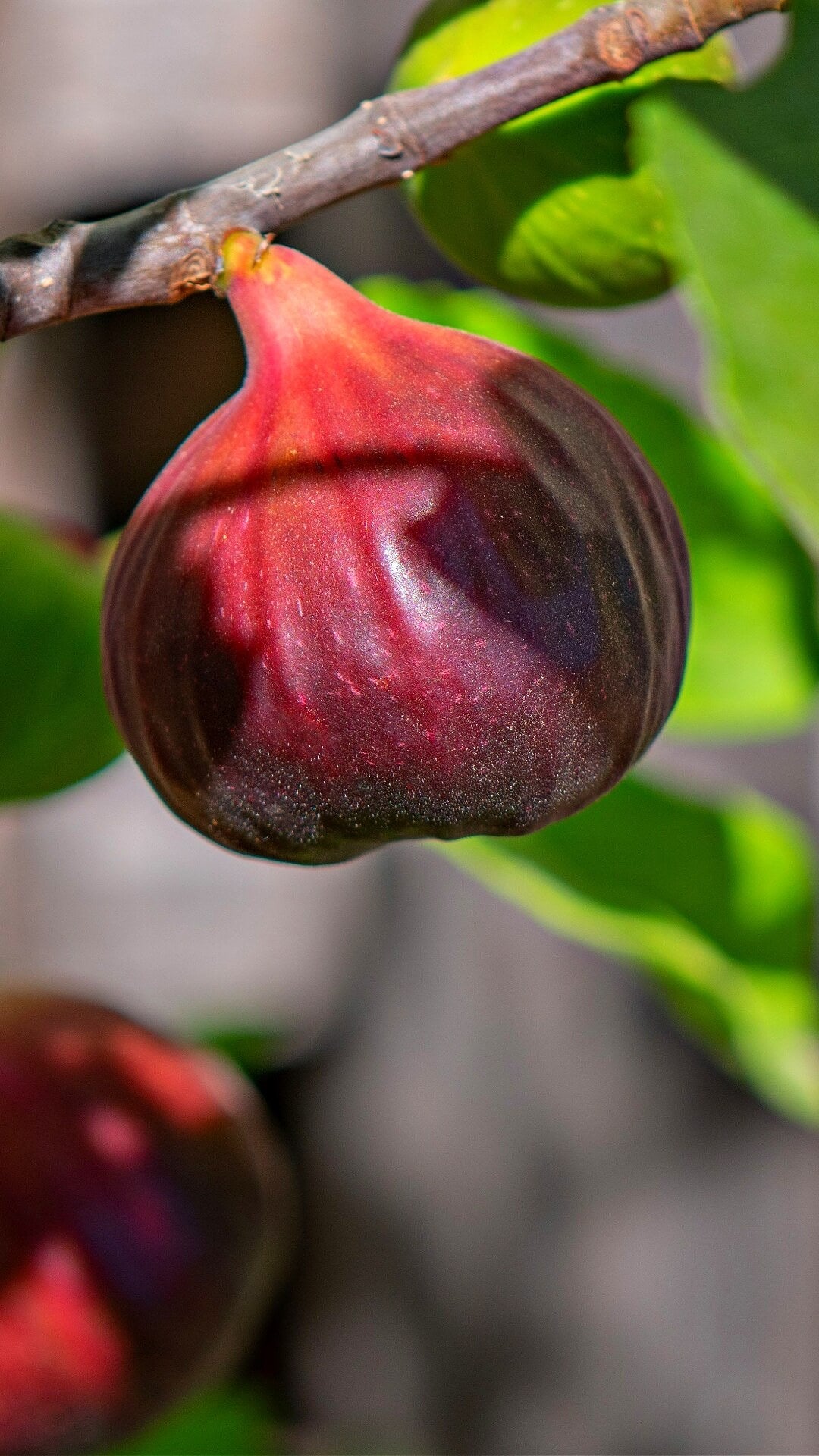Fig Trees for Sale
The Fig Tree is an ancient organism, cultivated by humans for centuries. It is native to the Mediterranean and parts of southwest and central Asia. It is part of the mulberry family and is a woody, deciduous, spreading tree that can also be described as a shrub based on its multi-stemmed composition.
The fruits of this tree are, of course, figs. Figs are edible, highly nutritious and delicious. They are eaten raw or dried, and commonly cooked into infinite dishes–savory and sweet–as well as used in jams, condiments and teas. This tree will be a great addition to your garden or yard, for its practical uses in the kitchen and its large, sprawling greenery.
Plant Details
Family: Moraceae
Light Requirement: Full sun, Partial shade
Water Needs: Moderate
Height: 15-30 ft
Spread: 15-30 ft
Growth Rate: Moderate
Soil Preference: Moist, well drained, does not tolerate alkaline soils
Season of Interest: Summer
Fruit: Red-Purple-Brown Figs
Wildlife Value: Mutualism with wasps; insects, wasps, and birds eat the fruit
Notable Characteristics of the Fig Tree
The Fruiting Fig Tree has a unique pollination technique that works directly with wasps, in a process called mutualism, where both organisms need each other to survive. Tiny wasps live and lay their eggs inside the inedible, male figs, and in doing so, transfer pollen from one fig to another.
When the wasp eggs hatch, the males and females mate and chew a hole through the fig so the female can fly off to another fig and lay her eggs, repeating the cycle. The males are flightless, so they often die trying to crawl out. If a female wasp makes her way to a female fruit, the pollen is still transferred, but she can’t lay eggs due to the stylus and will die inside. Wasp corpses are absorbed into pure protein by the fruit, but it is still possible to find tiny wasps inside your figs when you cut them open!
Landscape and Maintenance of Fruiting Fig Tree
The Fruiting Fig Tree grows best in full sun but tolerates partial shade. It thrives in moist, well drained soils of all kinds, but does not tolerate alkaline soils. The lush, green foliage is plentiful and its many, layered branches tend to grow just as far out as they do upwards.
It can grow to reach 30 feet tall and wide, which is why it’s sometimes considered a shrub rather than a tree. Either way, if you have the space for this plant to thrive in your garden or yard, you will be glad you took a chance on it. It is lush, beautiful and you can’t beat its delicious fruits.
Exposure
The Brown Turkey Fig Tree thrives best in full sun, receiving at least 6-8 hours of natural sunlight daily. It can tolerate partial shade, but consistent, bright sunlight achieves optimal fruit production and growth.
Height at Maturity
Under 25 Feet
Usage
Shipped As
Bare-root
Ships
UPS
Planting Zones
7-9




